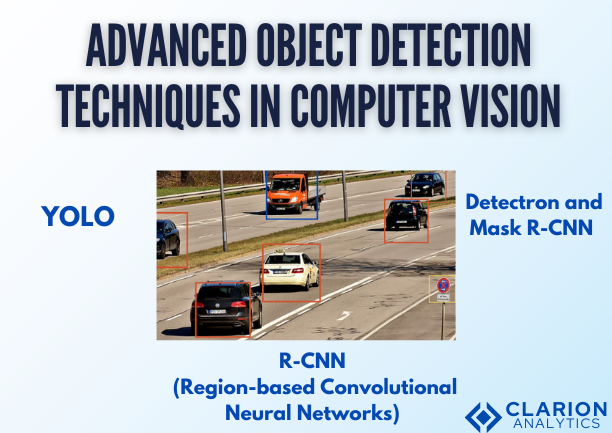
Real-world Object Detection computer vision deployments mostly depend on image classification for spotting objects within images to achieve data classification. Systems obtain the ability to classify and create decisions by understanding the content of images through this procedure. Ordinary image classification techniques introduce fundamental restrictions which limit their performance in advanced situations. Organizations that rely on these classification techniques learn about image objects but struggle to determine their precise spatial position. Dividing an image into smaller segments before conducting individual segment classifications represents one typical solution to overcome this problem.
The brute-force method theoretically reveals object location information yet it carries numerous major issues. The segmentation method fails due to two main problems which include misidentifying objects as false positives and failure in object detection as false negatives. The division of images into several sections elevates the computational demands while directly proportional to the number of required classifications leading to processing delays.
On the other hand the method adds complexity to object cluster grouping procedures. Numerous image sections divide the original area which makes it difficult for analysts to correctly group objects that extend beyond these boundaries for accurate analysis. The incorrect division of objects produces erroneous and incomplete detection results that degrade analytical precision.
Advancements in deep learning have led to the development of better object detection techniques to handle these observed drawbacks. Sophisticated algorithms embedded in these techniques advance beyond conventional classification by accurately identifying as well as locating objects throughout images with enhanced precision. Deep learning methods based on Convolutional Neural Networks (CNNs) together with their variants enable researchers and practitioners to detect objects accurately while achieving precise localization of objects.
Object detection typically involves three stages:
- Recognition: Identifying the presence of objects within an image.
- Localization: Determining the precise location of each object using bounding boxes.
- Classification: Categorizing each object into predefined classes (e.g., car, person, dog).
Exploring Advanced Techniques
YOLO (You Only Look Once) Object detection through YOLO approaches the detection process by designing it as a regression task. The algorithm components include dividing an image into separate grid cells which calculate area probabilities and bounding box locations in each subsection. The real-time analysis strength of YOLO allows this system to deliver instant results while maintaining good detection accuracy levels.
R-CNN (Region-based Convolutional Neural Networks) Region proposals were introduced by R-CNN along with its successors including Fast R-CNN and Faster R-CNN. The Region Proposal Network (RPN) produces prospective bounding boxes which afterwards undergo box classification and refinement processes through this method. The processing demands of addresses exceed YOLO but R-CNN variants deliver superior accuracy hence becoming essential for critical precision needs.
Detectron and Mask R-CNN Detectron represents a modular framework developed by Facebook AI Research that functions based on R-CNN foundation. The modern state-of-the-art models including Mask R-CNN find support within its architecture. Object detection extends to instance segmentation because it analyzes both object classification with area-level breakdown and each instance’s pixel-level segmentation.

Implementation Steps
Implementing advanced object detection techniques involves several key steps:
- Data Preparation: Curate a labeled dataset with accurate bounding box annotations using tools like LabelImg or CVAT.
- Model Selection and Training: Choose an appropriate architecture (e.g., YOLOv3, Faster R-CNN with ResNet) based on speed and accuracy requirements. Train the model on the labeled dataset using techniques like stochastic gradient descent (SGD) or Adam optimization.
- Inference and Evaluation: Deploy the trained model to perform inference on new images, predicting bounding boxes and class labels. Evaluate the model’s performance using metrics such as Intersection over Union (IoU) and mean Average Precision (mAP).
- Optimization for Deployment: Fine-tune model hyperparameters, optimize inference pipelines (e.g., using frameworks like TensorRT for NVIDIA GPUs), and consider hardware constraints to ensure the model meets real-time performance requirements.
Future Directions
The object detection sector grows by constant research initiatives which focus on advancing both performance speeds and detection precision and system stability. Scientists and professionals working at the margins of possibility currently devote their efforts to implementing complex modern technologies for tackling difficult real-world problems.
Researchers will probably work on new innovations by uniting advanced techniques with upcoming technologies such as self-supervised learning and domain adaptation. Through self-supervised learning models can utilize large volumes of unlabeled data to enhance their training process and benefit from domain adaptation techniques which optimize performance between different operational environments or conditions.
These modern developments create new opportunities to transform object detection through expanded capabilities as well as higher accuracy and efficiency. Modern object detection will advance through the interconnected use of innovative technologies which will stretch the possible applications of detection systems.
Researchers work to develop reliable object detection systems through solving existing method limitations while investigating new improvement paths for working in complex real-world scenarios. The continuous development of object detection systems shows great promise to advance technologies in autonomous driving and robotics and surveillance applications which need accurate object recognition to achieve success
Conclusion
Object detection techniques such as YOLO, R-CNN variants, and frameworks like Detectron represent a powerful arsenal for extracting detailed information from images beyond mere classification. These techniques are pivotal in applications ranging from autonomous vehicles to medical imaging, where precise object localization and understanding are critical. As Deep Learning Techniques for Object Detection evolve, they promise to further enhance capabilities and efficiencies in real-world computer vision tasks.
By understanding and implementing these advanced techniques, developers can leverage the full potential of object detection to solve complex problems and drive innovation in various industries.
Intrigued by the possibilities of AI? Let’s chat! We’d love to answer your questions and show you how AI can transform your industry. Contact Us
